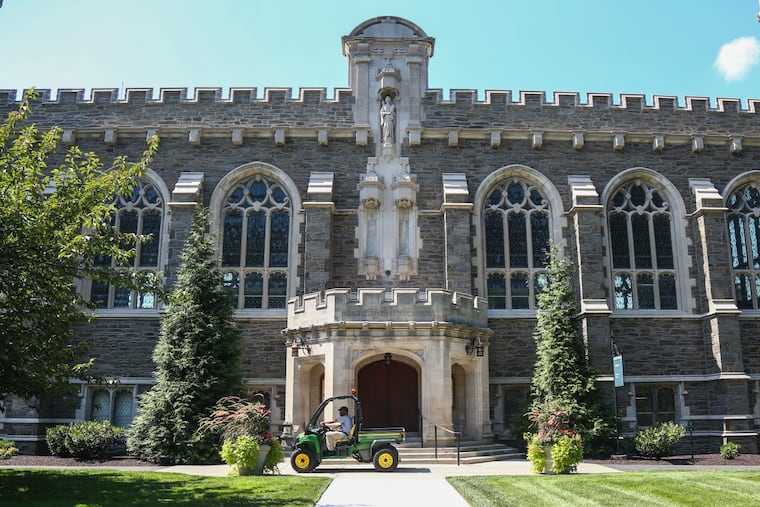Bryn Mawr College to remove former president’s name from library after legacy of antisemitism and white supremacy
Naming the library building at the historically women's college after former president M. Carey Thomas “functioned [as] an act of historical erasure,” Bryn Mawr officials said in a statement Tuesday.

Bryn Mawr College will remove the name of its second president, M. Carey Thomas, from its library, after a multiyear renaming process that forced the historically women’s college to reckon with the former leader’s antisemitic and racist past.
The college had previously issued a moratorium on using Thomas’ name when referring to the historic building but until Tuesday opted to keep the block-lettered inscription bearing her name above the entrance of the building now known as Old Library.
Naming the college’s library building after Thomas “functioned [as] an act of historical erasure,” read a statement posted Tuesday to Bryn Mawr’s website. “It silenced and erased the experiences of those who had been affected negatively by the racist and anti-Semitic policies that Thomas promulgated as College president and her active, public embrace of eugenics.”
Thomas served as president of Bryn Mawr from 1894 to 1922. During that time, the institution blossomed into a hub for the women’s suffrage movement while Thomas simultaneously blocked and rescinded admission to qualified African American applicants and refused to hire Jewish faculty.
» READ MORE: Bryn Mawr to reduce visibility of its 2nd president after reviewing her history of racism
The former president publicly pronounced her commitment to white supremacy, stating in remarks to Bryn Mawr’s 1916 freshman class: “If the present intellectual supremacy of the white races is maintained, as I hope that it will be for centuries to come, I believe that it will be because they are the only races that have seriously begun to educate their women.”
Bryn Mawr’s current president, Kim Cassidy, and the board of trustees notified students and staff of the decision Tuesday.
“We acknowledge the harm and hurt Thomas’ legacy of exclusion, racism, and antisemitism has caused for so many, and understand that the removal of an inscription does not alone redress that pain. We do believe that the removal of the inscription will open a door to healing,” the trustees wrote in their letter, which thanked students and staff “who have continued to shine light” on the subject.
Cassidy issued a moratorium on using Thomas’ name to refer to the library in 2017 as she convened a working group to determine when and how to invoke the former college dean and president. The group ultimately determined that students, faculty, and staff should no longer use Thomas’ name in conversations around the building, even though the committee ruled that the inscription should remain.
» READ MORE: Bryn Mawr College panel: Keep ex-president's name on library, but don't call it that
Bryn Mawr then installed another plaque explaining the library’s renaming. But students continued to press for further action and included the removal of Thomas’ inscription, bust, and portrait from campus in their list of strike demands in 2020.
The inscription — alongside Thomas’ bust and portrait — will be displayed as part of a future exhibit that will allow for “purposeful engagement with these objects and a reckoning with the full stories behind them,” Cassidy wrote. The former president’s ashes will also remain on campus.
“Reclaiming a building and creating an inclusive vision of the future for that space are efforts we will need to carry over time,” Cassidy wrote. “I am proud of the work we are collectively doing to understand our past and simultaneously create new systems that promote equity, inclusion and belonging for the future.”